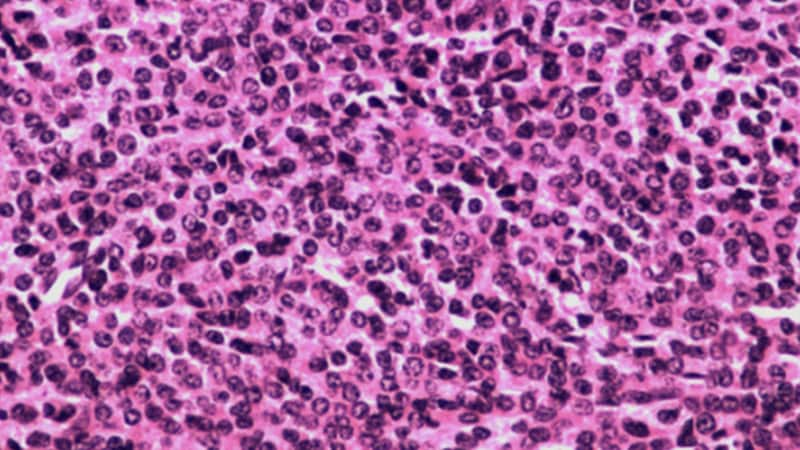ORLANDO, Florida — Clinicians should keep in mind concerns about overdiagnosis of thyroid cancer when prescribing glucagon-like peptide 1 (GLP-1) drugs, as the US black box warning about this risk for this class of medicines for certain tumors in mice could trigger excess screening, an expert endocrinologist said.
Speaking at the annual American Diabetes Association (ADA) 84th Scientific Sessions, Elizabeth N. Pearce, MD, MSc, a professor of medicine at Boston University, Boston, reviewed the different approaches US and European regulators have taken for the GLP-1 drugs. She also explained the current concerns about the wide use of thyroid screening in general and how these intersect with the rapid uptake of the GLP-1 drugs.
"We should not be screening for thyroid nodules before or during GLP-1 receptor agonist treatment just because the patients are on these medications," said Pearce, who is also a former board president of the American Thyroid Association (ATA). "We do not want to contribute to this epidemic of overdiagnosis of thyroid cancer."
The ATA and the US Preventive Services Task Force (USPSTF) are among the health organizations that have in recent years sought to boost public awareness of the potential risks for excess screening of thyroid nodules. In 2017, the USPSTF, which influences insurance coverage, recommended against routine screening for thyroid cancer in asymptomatic adults. At that time, the incidence of thyroid cancer detection had increased by 4.5% per year over a decade, faster than for any other cancer, but without a corresponding change in the mortality rate, UPSTF said.
"Unequivocally, the thyroid cancer mortality has not kept pace with thyroid cancer detection," Pearce said at the ADA meeting. "We've been diagnosing a lot of small thyroid cancers that people would otherwise have been destined to die with and not die of."
Pearce said clinicians should be careful not to overly restrict access to GLP-1 drugs due to concerns about thyroid cancer — and they should use care in screening nodules.
It's possible that the weight loss experienced by people taking GLP-1 drugs may make preexisting thyroid nodules more prominent, Pearce said. It's also likely that the US boxed warning on thyroid risk on GLP-1 drugs makes clinicians and patients more likely to look for these kinds of growths.
Pearce urged adherence to guidelines such as the ones the ATA published in 2015 for assessing nodules.
In an interview with Medscape Medical News, Pearce noted the frequency of CT scans in US medical practice in turning up many incidental thyroid nodules, a finding that can cause some panic for patients and their clinicians.
But it helps to put these findings in context, as by the age of 50, about 40% of women will have at least one thyroid nodule, making this a very common finding, she said.
"The vast majority are not malignant," Pearce said. "When you explain this to patients, it alleviates anxiety."
The US, European Union Differences
In the United States, the label for GLP-1 drugs starts with a boxed warning about thyroid C-cell tumors seen in rodents given these medicines in testing.
It's unknown if the medicines could cause medullary thyroid carcinoma (MTC) in humans, the label adds. The drug is contraindicated in patients with a personal or family history of MTC or multiple endocrine neoplasia syndrome 2, the boxed warning said. This is based largely on data seen in laboratory rats.
"It's a big black box warning that gets people's attention," Pearce said. "Important to note that if you practice in Europe, you will not be familiar with this labeling because it doesn't exist there. They've never had this warning on the European package."
The European Medicines Agency (EMA) does include information about the results of rodent studies as part of the discussion of known and potential risks for GLP-1 drugs but has not emphasized it in the same way as the US drug labels do.
For example, the public assessment report posted on the EMA website for semaglutide (Ozempic, Novo Nordisk) notes that nonlethal thyroid C-cell tumors "observed in rodents are a class effect for GLP-1 receptor agonists." It's possible that these may be due to a particular sensitivity in rodents, the report said.
"The relevance for humans is considered to be low but cannot be completely excluded," the EMA report said in the product information section of the report.
There has been ongoing interest in the issue.
The EMA's Pharmacovigilance Risk Assessment Committee (PRAC) in October concluded that the available evidence does not support a causal association between GLP-1 receptor agonists and thyroid cancer.
The EMA's PRAC safety committee said it began assessing the evidence about a possible connection following the publication of a study in 2022 in the journal Diabetes Care. That paper reported on an analysis that suggested increased risk for all thyroid cancer and medullary thyroid cancer with the use of GLP-1 drugs, particularly after 1-3 years of treatment.
The EMA's PRAC said that in making its decision, it also considered other published papers on this topic as well as clinical and post-marketing data on GLP-1 drugs.
In an email exchange with Medscape Medical News, Jean-Luc Faillie, MD, PhD, corresponding author of the Diabetes Care paper, called for continued "vigilance and prudence in clinical practice" with GLP-1 drugs.
His paper reported on a case-control analysis on the basis of reports from the French national healthcare insurance system database, looking at people who had taken GLP-1 drugs and similar people who had not.
Due to a lack of a specific diagnostic code for medullary thyroid cancers, the researchers used a composite definition combining thyroid cancer diagnosis with several calcitonin tests, a carcinoembryonic antigen test, or a specific treatment (vandetanib) to identify potential cases of this cancer.
It's possible that this method could have led to overestimation of MTC among the cases of thyroid cancer, wrote Faillie, who is a professor at France's Université de Montpellier, Montpellier, France, and part of its pharmacological vigilance service.
"Nevertheless, it's crucial to emphasize that any potential overestimation of MTC cases would likely apply equally to both GLP-1 receptor agonist-exposed and unexposed groups," Faillie wrote. "Therefore, it should not significantly impact our main findings regarding the suggested increased risk associated with GLP-1 receptor agonist use."
Pearce disclosed honoraria for speaking at the Merck China Forum.
Faille and his coauthors reported no conflicts of interest in the publication of their study. Their research was supported by the French Medicines Agency (Agence Nationale de Sécurité du Médicament et des Produits de Santé, grant 2019S015) in the context of a partnership with the Health Product Epidemiology Scientific Interest Group (EPI-PHARE). The study was part of France's Drugs Systematized Assessment in Real-Life Environment (DRUGS-SAFEr) research program.
Kerry Dooley Young is a freelance journalist based in Washington, DC.

.webp) 2 days ago
2
2 days ago
2


























 English (US)
English (US)